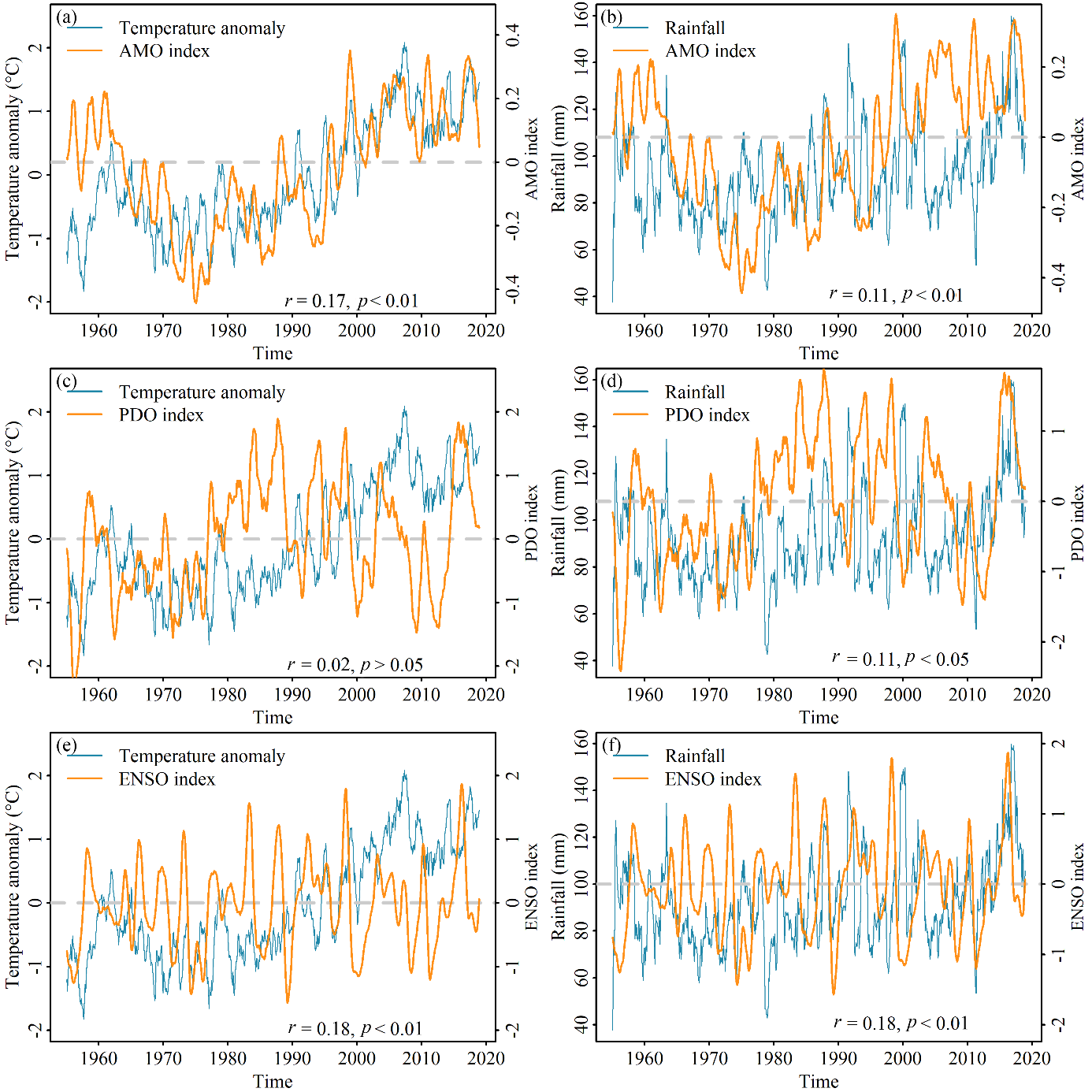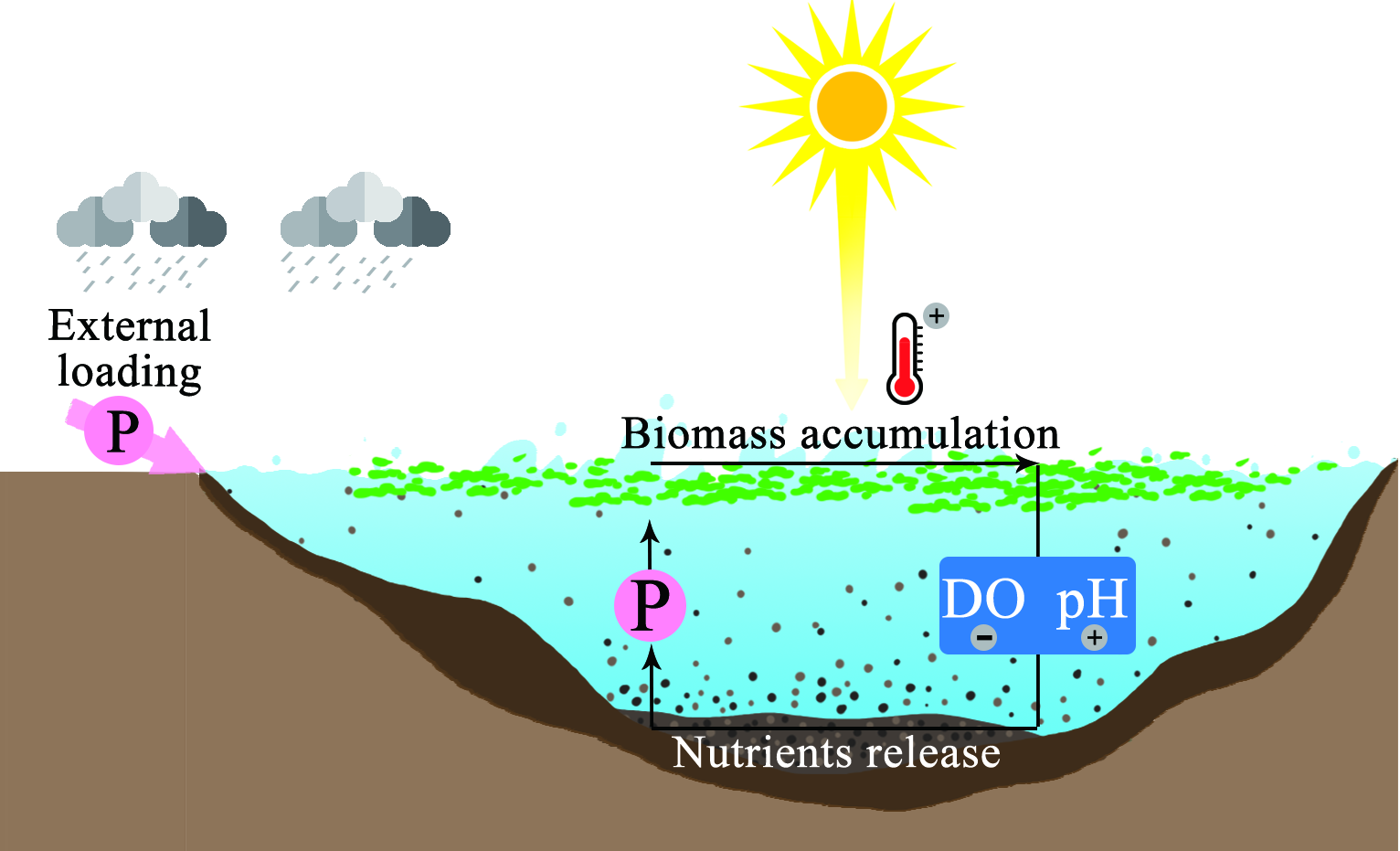Why recurring? - Positive feedback of extreme climate anomalies on cyanobacterial bloom in lakes
Since the drinking water crisis triggered by the cyanobacterial bloom in 2007, extensive and high-intensity pollution control and ecological restoration carried out in the entire Taihu basin.
Ten years later, water quality improved according to some variables; however, the cyanobacterial bloom has not been effectively contained in Lake Taihu. Total phosphorus concentrations have even increased in recent years, intense cyanobacterial blooms have persisted through 2017 with a record-setting bloom occurring in May, 2017.
The contradiction between water quality and cyanobacteria bloom fluctuations and intensity management in Taihu Basin is confusing. The effectiveness of scientific and precise restoration of Lake Taihu has been widely questioned, further implementation of Lake Taihu management and the formulation of ecological restoration programs were also hindered.
Recently, an international research group led by Prof. QIN Boqiang from the Nanjing Institute of Geography and Limnology, Chinese Academy of Sciences (NIGLAS), carried out multidisciplinary research and proposed that regional extreme climatic anomalies could intensify nutrients cycling in the water-sediment interface and promote the cyanobacterial blooms in Lake Taihu.
The study was recently published in Water Resources Research.
Multi-source data analysis showed that the abnormally high rainfall in the Taihu Basin in 2016 led to a sharp increase in external loading. At the same time, the winter temperature of 2016/2017 was the highest value since the 1960s, resulting in a high value of overwintering cyanobacteria biomass. The 2015/2016 super El Nino event, coupled with warm phase of the Atlantic Multidecadal Oscillation (AMO) and Pacific Decadal Oscillation (PDO), jointly induced heavy rainfall in the Taihu Basin in 2016 and the following warm winter.
After the severe blooms in 2017, the pH of the water body increased and the concentration of dissolved oxygen at the bottom of the lake decreased due to photosynthesis or organic matter degradation, which promoted the internal loading and further benefit the blooms, i.e., a positive feedback among "nutrient accumulation-heavy blooms-internal loading-eutrophication aggravation”. The enhanced nutrient cycle provides a continuous nutrient for the cyanobacterial bloom persistence.
This research interprets that under the big picture of global warming, regional extreme climate anomalies will further deteriorate lake water quality, promote eutrophication and cyanobacterial blooms in eutrophic lakes.
This work was funded by the National Natural Science Foundation of China and the Water Pollution Control and Treatment Science and Technology Major Project.
Reference:
Extreme Climate Anomalies Enhancing Cyanobacterial Blooms in Eutrophic Lake Taihu, China

Fig. 1 Long-term trends of AMO, PDO, ENSO, and their relationships related to temperature anomalies and rainfall in Tahu Basin

